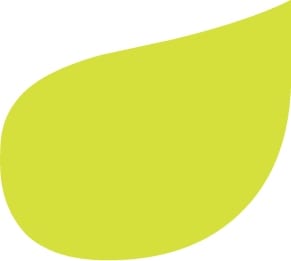Not sure if your child’s bumps, rashes, or scrapes are benign, or the result of a more serious condition? Get to know these 5 common pediatric skin problems.
If you’ve ever taken care of a newborn baby or infant, you know just how prone they can be to minor injuries and illnesses. In particular, young children are susceptible to a “rash” of skin conditions, the majority of which adults are immune to or at the very least, are less likely to contract. Read on for our guide to the most common pediatric skin problems, and how to treat them.
1. Eczema
Also called atopic dermatitis, eczema is a common skin condition that can occur at any stage of life, but most commonly occurs in childhood. More than half of infants affected by the condition grow out of it by age two, while only about 10% of children are chronically affected. When recurring flare-ups do occur, they are relatively easy to treat.
The most obvious symptom of eczema are red, itchy, dry patches of skin. These rashes most commonly appear on the arms and behind the knees, but they can appear anywhere on the body. Doctors may prescribe topical steroid creams and oral antihistamines to help with the itching, but treatment will vary from child to child. If your child has eczema, you should avoid hot baths, perfumes, and scented soaps or lotions. Use a mild detergent to wash clothes, and dress your child in cotton rather than less breathable fabrics like polyester. Always apply moisturizer after bathing, and avoid scratching or rubbing the affected areas.
2. Molluscum
Another common pediatric skin condition is molluscum, or molluscum contagiosum. As the name suggests, molluscum is a highly contagious virus. It causes tiny, pimple-like lesions on the skin, or molloscum; since new bumps form wherever an old bump comes into contact with the skin, the condition can spread rapidly and be difficult to manage. We recommend that you don’t bathe your kids together, since the lesions can float in water and infect other children. You should also avoid public pools, since they’re a common breeding ground for molloscum.
Preschoolers and kindergarteners are most likely to get molloscum, but adults are immune to them. Unfortunately, there are no completely effective antiviral treatments for the skin condition, but there are ways to manage it. The first is a medication called cantharidin, which is made of beetle juice taken from the blistering beetle of South America. It’s a completely painless option that causes an easily peelable blister to form within 24 hours, making it an ideal treatment choice for children. The second option is to freeze the bumps with liquid nitrogen, which is sometimes more effective, but can be much more painful. You can also apply a cream that causes contact dermatitis, which then triggers the immune system to attack the molluscum virus.
3. Warts
Warts are caused by a viral infection that can affect children of any age — they usually appear as hardened bumps on the fingers, hands, and feet. Unlike plugs, which are caused by a pox virus, common and flat warts are caused by the human papilloma virus (HPV). They’re usually spread through direct contact, although an accidental swipe generally won’t leave you with a wart.
There are no antiviral treatments for HPV itself, but the warts themselves can be treated. There are a number of over-the-counter treatments available, most of which contain salicylic acid, an acid which softens and dissolves the abnormal skin cells. Make sure you carefully follow the directions on the package, and cover the warts with a bandage after applying the acid. Other treatment options including freezing it with liquid nitrogen, burning it off with a laser, or injecting it with yeast.
To avoid warts, always wear flip flops by the pool or in public showers, avoid direct physical contact with those who have warts, and practice good overall hygiene.
4. Diaper Rash
Diaper dermatitis, or diaper rash, is another common skin condition that first presents as an irritant. Often misdiagnosed as a yeast infection, diaper rash manifests as bright red, slightly swollen patches in your child’s diaper area.
There are many causes of diaper rash, including higher acidity in your child’s stool as a result of teething. During teething, babies create an excess of saliva; since saliva is acidic, your baby’s stool will be more acidic, resulting in irritation in the diaper area. Especially acidic foods like oranges or grapefruit can have the same effect, as can certain diapers and baby wipes.
To treat diaper rash, try Desitin, a topical cream applied to the diaper area once or twice a day. The thickness of the cream will create a barrier between the skin and diaper, reducing the risk of a diaper rash. It is also advisable to apply an antifungal cream to prevent a yeast infection, since steroid creams can cause yeast to grow. Be careful with the application of topical steroids, especially in the diaper area, and stick with medications that contain 1-2% hydrocortisone.
5. Impetigo
Impetigo, also called school sores, is a very common skin infection that causes red sores on the face. It is highly contagious, and spreads by skin-to-skin contact. Impetigo can be a particular challenge when a child’s skin is already irritated by another condition, such as eczema, poison ivy, or bug bites. Impetigo can occur when a blister or sore is scratched, creating an opportunity for infection to set in. It can occur anywhere on the body, but is usually found around the nose and mouth, hands, forearms, and sometimes the diaper area. Crusted impetigo, the more common kind, causes blisters that burst and leak fluid. Bullous impetigo causes bigger, fluid-filled blisters that generally don’t burst.
For treatment, antibiotic ointments can be used if the infection affects a small area. To prevent impetigo from spreading, keep the area covered with a bandage or gauze, since the sores can ooze and cause layers of crust to form. If the infection has spread to multiple parts of the body, a dermatologist can prescribe an antibiotic pill or liquid to be taken for 7-10 days.
If you have additional questions or are concerned that your infant or toddler might have one of these conditions, contact a dermatologist for expert advice and care.

